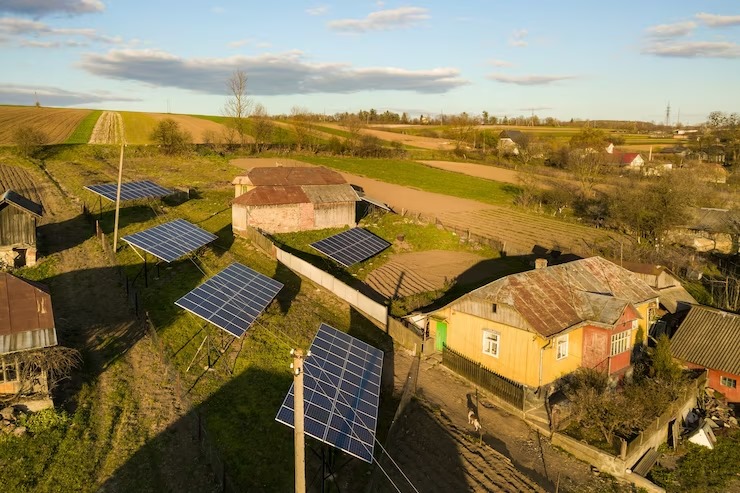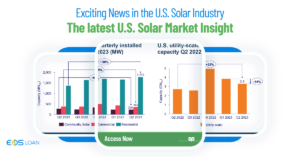Flavio Nogueira – DSC – Energy Planning Program – PPE- Federal University Rio de Janeiro Post-doc researcher, Sustainable Finance dept. – FGV School of Business Administration SP
Acknowledgement: This article was written with AI collaborations from https://bard.google.com/ and Microsoft BING.
Context
The last IPPC report, AR6 (IPCC, 2023) has made it clear that equity is essential for effectiveclimate action. prioritizing equity, social justice, and climate justice, we can build a more sustainable future for all. Finance, technology, and international cooperation are critical enablers for accelerated climate action. Enhancing technology innovation systems is key to accelerate the widespread adoption of technologies and practices.
Climate change is a global problem, but it is not distributed evenly. The poorest and most vulnerable people are often the most affected by climate change, and the covid-19 pandemic increases the need for decentralized electricity generation systems.
Figure 1 – Population without Access to Electricity and Clean Cooking, 2022

Source: REN21 (2023) – page 13
The electricity demand continues to grow. In 2022, total electricity generation worldwide increased 2.3% to reach 29,165 terawatt-hours (TWh), a growth rate close to pre-COVID levels and below the 6.2% rebound of 2021. Renewable energy sources contributed 92% of the increase. REN21 (2023)
There are many forms to finance decentralized Solar Home Systems (SHSs). You can read more about that in the article What is Solar Energy Financing and How Does it Work? (EOS,2023).
To address the need of for electricity for Base of Pyramid (BOP) customers is discussed the Pay-As-You-Go (PAYG) financing, a viable strategy to connect the ‘last mile’ without electricity access in poor regions of Africa and India as presented by Yadav et al., (2019).
According to the World Bank, PAYG model has emerged as one of the effective commercially viable solutions to provide decentralized energy access to rural and remote communities in developing nations. An estimated 1.4 billion people globally live without access to any form of electricity, and millions more, who are already electrified, often face unreliable grid supply (BNEF and World Bank, 2016).
The PAYG model
The PAYG model goes is not only a financing solution but a business innovation that offers online repayments in a flexible manner using modern information technology and better mobile connectivity, making the system more affordable. The functionality of blocking SHS remotely in case of non-payment reduces transaction cost of payment collection and reduces investment risk.
PAYG delivery model and payment methods
There are two models of SHS delivery with distinct method of payment as presented in table1. The range of diverse and solar PV products offered under PAYG model have been able to serve both underprivileged and middle-income rural customers depending on their budget.
Table 1: Comparison of typical PAYG models.

PAYG SHS delivery models
PAYG solar enterprises use distributed power from PV panels installed off-grid, mostly on consumers’ roofs. This model usually operates in two modes: Rent to Own and Energy as a Service (Table 1). In both models’ consumers pay per their energy consumption. Most enterprises offering PAYG operate via the Rent to Own model which is based on microfinancing. Some enterprises only sell the energy generated by the solar home system under a long-term lease with customers under Energy as a Service model. Energy prices are obviously lower in this model than the Rent to Own model.
Payment methods to PAYG
PAYG enterprises broadly use two types of tariff collection options (manual and mobile payment). The manual payment method requires agents to accept cash and activate the PV systems via Bluetooth, a cable or manually entered SMS code or scratch card-based payments.
Enterprises using mobile networks may either use mobile money platforms (M-KOPA) or use mobile airtime as a virtual currency to pay for the energy service PAYG.
The enterprises operating in digital payment mode can make better value for their customer by remote and real-time monitoring of the PV systems, because of lower operating costs.
The case of PAYG in Kenya
Power generation in Kenya is dominated by large-scale hydropower, fossil fuels and geothermal sources along with a minor contribution from renewable sources. Between 2012 and 2016, electricity access rate, improved from 20% to 65%, but 17 million people in the country are still without electricity access. The progresses in solar PV due to a combination of public initiatives, public-private cooperation, and international support.
Rural electrification using decentralized solar PV in Kenya has been supported by the government through exemption of duties and value-added taxes on imported PV products and components.
PAYG was first employed in Kenya as a consumer finance solution for providing clean energy and revenue collection from poor and remote customers often with irregular income.
The Kenyan PAYG based solar energy market is characterized by three distinct features that supported a major boom in the sales of solar systems: i) quality-verified solar systems, ii) enterprises focused on un-electrified areas with high population density and iii) import tax waivers on solar-related items.
Two companies enable the PAYG in Kenya, M-KOPA and BBOXX. M-KOPA is an innovative asset financing, a for-profit company founded in Kenya in 2011, offering clean energy to off-grid customers at a lower cost. The company expand to Tanzania, and Uganda and it has reportedly connected over 500,000 homes in May 2017. M-KOPA uses a patented technology platform (M-KOPAnet™) that combines embedded GSM and mobile payments to deliver SHS financing. KOPAnet™ works through Safaricom’s mobile banking and money-transfer platform (M-PESA).
BBOXX is a for-profit venture started in March 2010, operating in Kenya, Rwanda, and Uganda. BBOXX systems can be paid via a mobile payment scheme by customers in monthly instalments over 3 years. The solar kits called SMART Solar have remote monitoring and control capabilities.
Table 2 present products and financing methods of each company. Although both companies aimed off grid customers M-KOPA offers a more diversified and expensive solutions for middle-income rural customers.
Table 2 – Product offerings of M-KOPA and BBOXX.

Opportunities for strengthening PAYG in India
Electrification via the grid is the dominant paradigm to connect those without energy access in India, including remote and rural com munities. The Rural Electrification Policy of 2006 through several government programs have supported these policies, that successfully electrified more than 120,000 villages across India during the last decade to pronounce India as 100% electrified in April 2018. However, the definition of an electrified village requires only 10% of households to be connected. Aim of achieving universal household electrification Saubhagya scheme in 2017. The initiative has enabled around 20 million households with electricity services during its first 15 months.
While all households are targeted to be connected by March 2019, providing them 24 × 7 reliable power appears difficult in short to medium term in India This situation is associated with multidimensional issues including poor financial condition of most electricity distribution companies and costs in transmission of power in far distant communities among other conditions. In this context, PAYG SHS model could be an alternative way for connecting underprivileged households in rural areas and providing them reliable and affordable power supply.
There are several barriers to the advancement of PAYG exist in India. First the lack of government support and policy and regulatory ambiguities that severely impact enterprise financing. Secondly, is that the country is still largely a cash-based economy, and mobile money is relatively complications and resulted in low PAYG penetration.
Simpa Networks is a for-profit social enterprise that provides solar home systems to rural households in India. Simpa’s business model is based on long-term relationships with customers and communities, as well as a pay-as-you-go (PAYG) system that allows customers to make small, regular payments. This model has helped Simpa to achieve a low default rate and attract mainstream capital investment.
One of the challenges that Simpa faces is the lack of use of mobile money platforms in India. This means that Simpa has to invest more in its collection and distribution workforce. However, Simpa has been able to overcome this challenge by developing a strong network of Urja Mitras (Rural Sales Associates) who are able to provide customer support and collect payments in person.
Case study – Simpa Networks
Since 2010, Simpa Networks has raised a total of USD 24.5 million from 9 rounds of funding. Simpa does not receive any subsidies from central or state governments, but it does consider interacting with the government through a future-proofed offering capable of grid integration.
Overall, Simpa Networks is a well-run social enterprise with a sustainable business model. The company is well-positioned to continue to grow and scale in the years to come.
Here are some additional thoughts on Simpa Networks’ business model:
- The long-term relationships that Simpa builds with customers and communities are essential for reducing default rates and building trust.
essential for reducing default rates and building trust. - The PAYG system is a flexible and affordable way for customers to pay for solar home systems.
- Simpa’s network of Urja Mitras is an asset that helps the company to provide
customer support and collect payments. - Simpa’s focus on innovation is evident in its future-proofed offering capable of grid integration.
SHS in India as in 2023
The market for off-grid home solar systems in India is growing steadily, as more people seek reliable and affordable electricity solutions in rural and remote areas. According to the Off-Grid Solar Market Trends Report 2020 World Bank Group (2020), India is the second-largest market for off-grid solar products in the world, after Sub-Saharan Africa, with an estimated 118 million people using off-grid solar products as of 2019⁴. The report also states that India has the largest potential market for off-grid solar products in the world, with 363 million people who could benefit from such solutions by 2030.
The market is dominated by domestic and international companies that offer a variety of products and services, such as solar lanterns, solar home systems (SHS), and solar appliances. The main challenges facing the market include lack of awareness and trust, lack of access to finance, and lack of standardization and regulation.
The key points:
- The off-grid home solar systems market in India is growing steadily, with an estimated 118 million people using off-grid solar products as of 2019.
- The market is driven by increasing demand for electricity access and reliability, decreasing cost and increasing affordability, and supportive policies and initiatives.
- The main players in the market are both domestic and international companies, such as Tata Power Solar, Luminous Power Technologies, d.light, Greenlight Planet, Simpa Networks, and SELCO India.
- The market is facing some challenges, such as lack of awareness and trust, lack of access to finance, and lack of standardization and regulation.
Conclusions
Yadav et al., (2019) argues that PAYG based SHS can provide reliable and affordable electricity access to rural and poor customers in India, who face unreliable and poorquality grid supply. Drawing insights from the successful PAYG experiences of Kenya and East Africa, and identifies the existing and emerging pre-conditions that favor PAYG in India, such as digital transactions, mobile payment platforms, smartphone users, global PAYG enterprises, etc. The text also proposes a PPP (public-private partnership) between
state electricity distribution companies and PAYG enterprises to accelerate electricity access.
There is an enormous potential to provide electricity to BOP customers that are off grid or have poor quality of on grid electricity as in rural areas in India. The successful experiences in Africa can be adapted for countries with rural areas with poor electricity services like the north o Brazil and other Amazonian countries.
To achieve the goal of greenhouse gases emissions and reduce poverty in rural areas the SHS need to be speed up, with better government policies, the growth of financial solutions to enable solutions the combine better and cheaper SHS and mobile communications and payment services.
References
BNEF & World Bank (2016). Off-grid solar market trend report 2016 [online]. Available at: http://www.energynet.co.uk/webfm_send/1690
EOS. What is Solar Energy Financing and How Does it Work? (2023). Available at: https://academy.eossolarloan.com/what-is-solar-energy-financing-and-how-does-it-work/
IPPC. Assessment Report 6 – AR6 (2023). Available at: (https://www.ipcc.ch/ar6-syr/)
PV Magazine India (2022). Tapping the off-grid solar market in India – pv magazine India. https://www.pv-magazine-india.com/2022/02/10/tapping-the-off-grid-solar-market-in-india/.
REN21. RENEWABLES 2023 GLOBAL STATUS REPORT (2023). Available at: https://www.ren21.net/wpcontent/uploads/2019/05/GSR2023_GlobalOverview_Full_Report_with_endnotes_web.pdf
World Bank Group (2020). Off-Grid Solar Market Trends Report 2020 – Available at:. https://www.worldbank.org/en/topic/energy/publication/off-grid-solar-market-trends-report-2020.
Yadav, P., Heynen, A. P., & Palit, D. (2019). Pay-As-You-Go financing: A model for viable and widespread deployment of solar home systems in rural India. Energy for Sustainable Development, 48, 139–153. https://doi.org/10.1016/j.esd.2018.12.005





